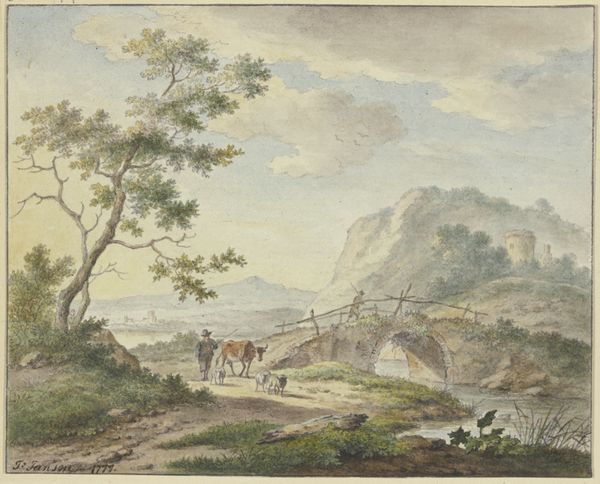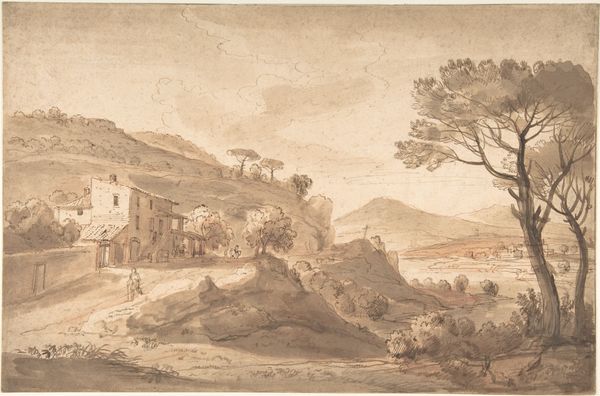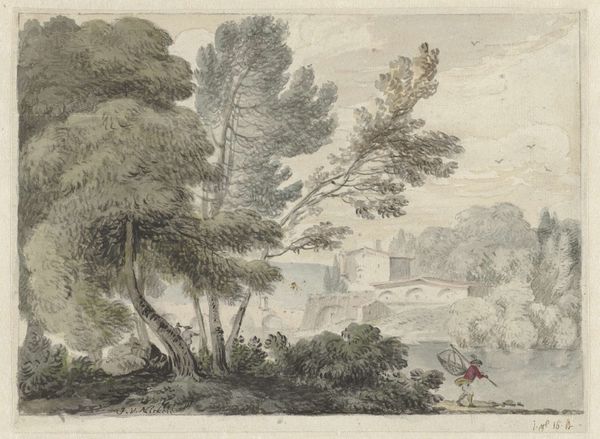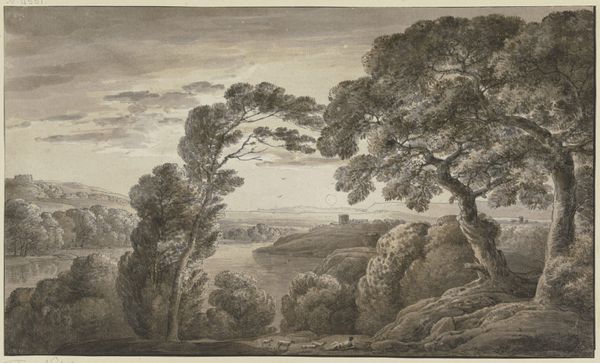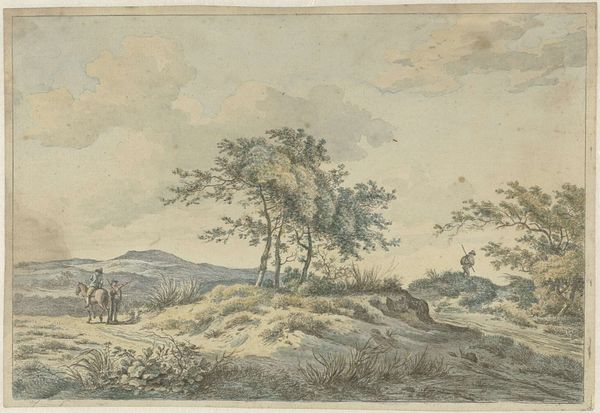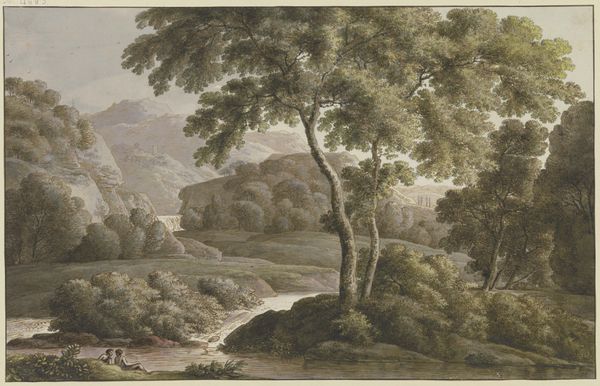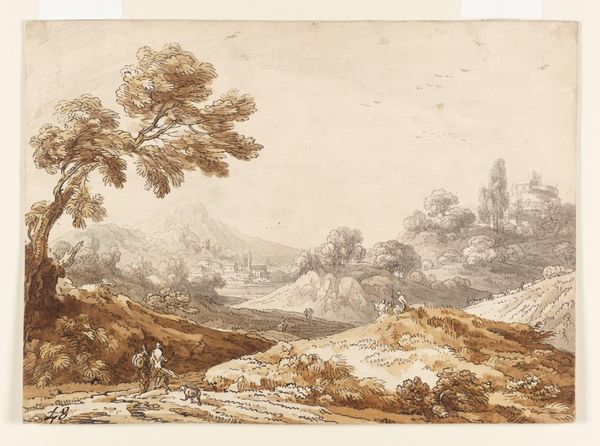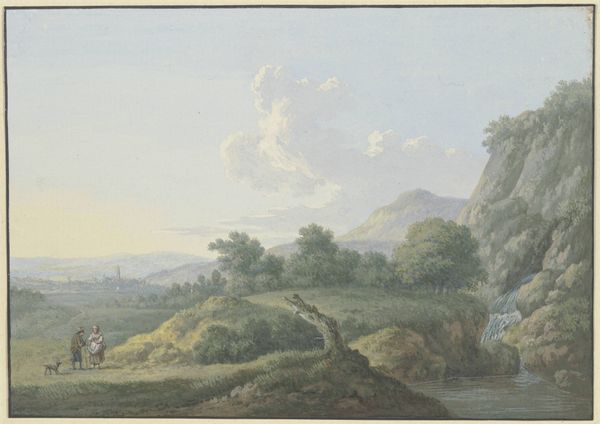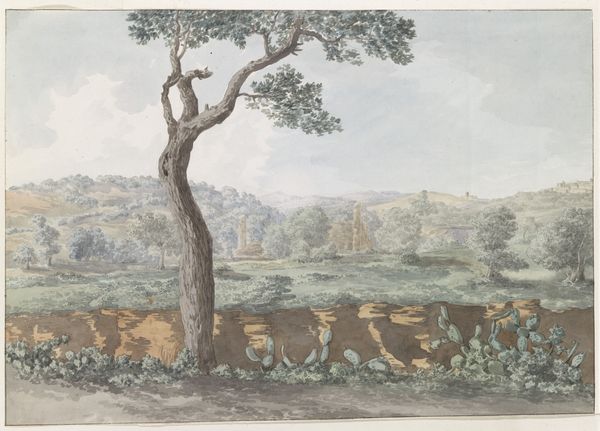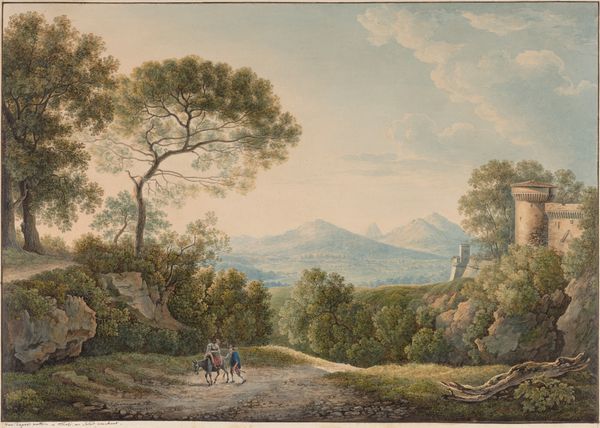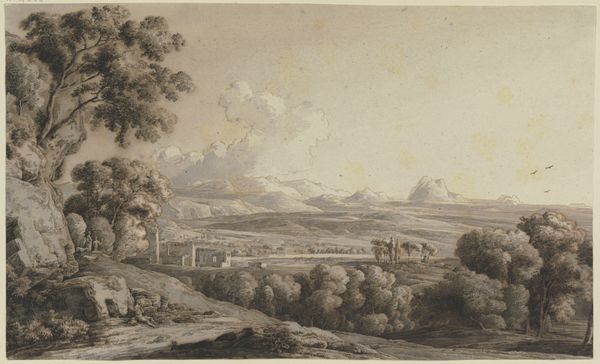
Dimensions: support: 407 x 613 mm
Copyright: CC-BY-NC-ND 4.0 DEED, Photo: Tate
Curator: This is Francis Towne's "Naples and Capri", part of the Tate Collection. It’s a watercolour piece that captures the famed Italian landscape. Editor: What immediately strikes me is how carefully Towne composes the trees; they serve as almost theatrical framing devices for the distant vista. Curator: Indeed, and the picturesque quality is further accentuated when we consider the Grand Tour and the British elite's fascination with Italy as a cradle of culture. This image catered to that market. Editor: Yes, but consider the formal handling. The layering of washes creates depth, but the palette is quite restrained, almost monochromatic. It is about light and form more than vivid color. Curator: It speaks to the era's artistic conventions, that's true. These landscapes were never just about topography; they carried cultural and political weight. Editor: I concede to your point. It is a document reflecting the tastes and ideologies of its time. The very act of observation and documentation becomes a statement. Curator: Exactly. It shows us how artists and patrons perceived and shaped their world, and continue to shape it today. Editor: And it offers us, as viewers, a chance to unpack those layers of meaning, both aesthetic and historical.
Comments
Join the conversation
Join millions of artists and users on Artera today and experience the ultimate creative platform.
tate 8 months ago
⋮
Towne was one of a pioneering generation of watercolour artists who endowed the medium, traditionally associated with rather humble, descriptive artistic work, with a new sense of ambition. In 1780–81 he travelled in Italy, sketching the landscape. On his return he received commissions for watercolours based on these observational sketches, of which this one. The sense of abstract design and the clarity of his watercolours were highly innovative, but Towne remained based in Devon working as a drawing teacher. His work was rediscovered and promoted by the collector AP Oppé in the 1930s. Gallery label, February 2016
